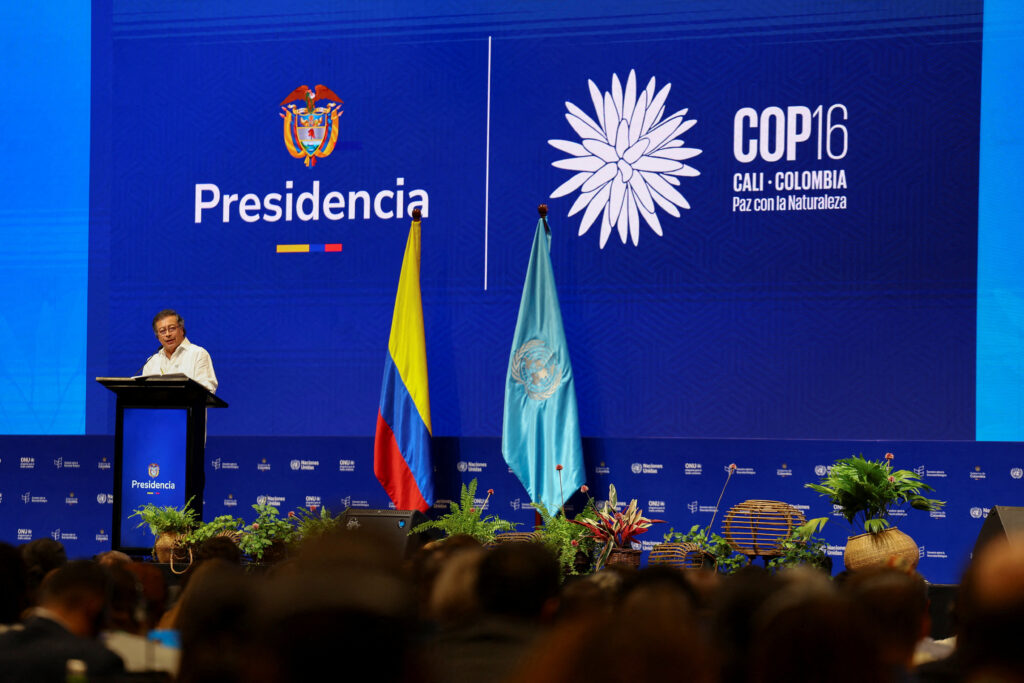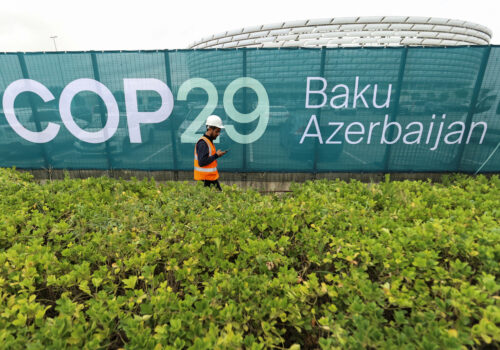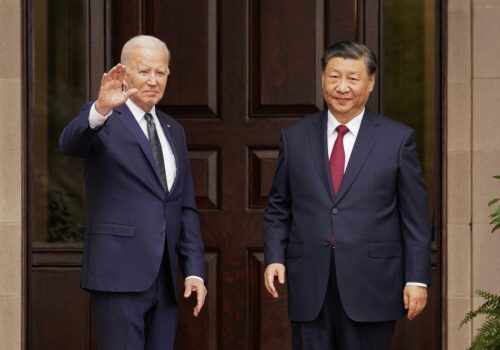Global biodiversity isn’t just declining; it’s in free fall. Around one million plant and animal species around the world are currently threatened with extinction, according to a landmark 2019 report. Worse still, efforts to stall this loss are not keeping pace with the degradation. More than 85 percent of countries are lagging behind in their conservation pledges, threatening ecosystems essential to the planet’s future.
Biodiversity loss is especially urgent in Latin America and the Caribbean (LAC). The region is home to 60 percent of the world’s biodiversity and six of the planet’s seventeen megadiverse countries. The Amazon rainforest, for instance, is a critical global ecosystem that is under increasing threat from illegal mining and other activities. Conservation investments there and throughout the region are both an urgent local need and a strategic imperative with global implications.
It should be no surprise, then, that LAC countries are at the forefront in seeking to reduce biodiversity loss. Colombia just hosted the 2024 United Nations Biodiversity Conference, also known as COP16, where representatives from nearly two hundred countries met to discuss this issue. Next year, Brazil will host the annual United Nations Climate Change Conference (COP30) in Belém, on the Amazon River, where conservation efforts remain a priority.
I was at COP16, and over the two weeks it was held I heard an array of ideas about how do address global biodiversity loss. A surprising number of discussions, however, eventually landed on one core idea: biodiversity credits. In practice, the key difference between credits and offsets is their impact on biodiversity. A biodiversity credit is focused on creating a net-positive impact. This typically involves companies or governments buying a portion of or all of the credits of a project that preserves biodiversity for a set price. This encourages environmental stewardship and can meet an organization’s internal environmental goals.
On the other hand, biodiversity offsets allow companies to purchase credits in a secondary market to compensate for environmental damages. Offsets are focused on compensation for emissions, deforestation, and other dangerous impacts, while credits are focused on investing in projects that enhance biodiversity and mitigate the impacts of climate change.
If kickstarted effectively, biodiversity credits would be part of larger biodiversity markets, which are projected to reach nearly seventy billion dollars by 2050. Drawing on lessons from carbon credit markets, the LAC region has a unique opportunity to drive a well-structured biodiversity credit market. Such a market offers a path toward ecological resilience, sustainable economic diversification, and social welfare for the region.
However, the market for biodiversity credits is currently in its infancy. Few institutional frameworks or regulatory structures support these credits, making it difficult for LAC countries to develop them to their full potential. And while biodiversity credits could catalyze conservation efforts, they face substantial challenges: The demand for them is small, they are largely voluntary, and they lack the policy backing necessary for market growth. The region’s biodiversity is under threat from illegal activities, and without significant investment, ecosystems that serve as global carbon sinks and biodiversity reservoirs are at risk.
A framework for action
To unlock the full potential of biodiversity credits, LAC leaders, international organizations, and private sector stakeholders must act with purpose. Here are five ways that regional and global actors can build momentum for biodiversity credits:
- Develop institutional frameworks and ensure market integrity. The Biodiversity Credit Alliance (BCA), facilitated by the United Nations, is already bringing together multiple stakeholders to build credibility and equity in biodiversity markets. BCA’s role in aligning private sector investments with global biodiversity targets through standardized frameworks and its community engagement platform with nearly five hundred members offer LAC governments and the private sector an ideal partner to cultivate a transparent and accessible biodiversity market.
- Spur efficient regulatory policies to drive demand. Unlike carbon credits, which have seen substantial growth in demand through regulatory requirements, biodiversity credits currently rely on voluntary markets. Governments should ensure they implement strong regulatory frameworks, which are essential to boost demand, create consistency, and build trust among potential investors. These regulations would allow companies in LAC and abroad to integrate biodiversity credits into broader carbon and biodiversity finance strategies, ensuring these markets grow sustainably and support conservation goals.
- Clarify biodiversity credit applications and standards. Biodiversity credits are distinct from biodiversity offsets and carbon credits, and the differences need to be understood if they are to be used effectively. Third-party regulators and multilateral development banks should define these credits in terms of their conservation goals to ensure metrics are carefully evaluated and transparent, which will enable integration into projects that enhance ecological resilience. This clarity can ensure that biodiversity credits are used appropriately, supporting true conservation rather than merely offsetting environmental damage.
- Emphasize community-centered projects with accountability. To foster genuine trust in biodiversity markets, it is vital to center efforts around communities and transparency. Governments should take lessons learned from the carbon market, which underscore the importance of putting transparency and community benefit at the forefront of the agenda, particularly for projects that engage Indigenous and local populations. By partnering with local communities, LAC governments and multilateral banks can design projects that both protect biodiversity and help foster sustainable livelihoods.
- Promote knowledge sharing and collaboration. Effective biodiversity credits require knowledge-sharing partnerships that avoid fragmentation and strengthen scientific knowledge. Collaborations with local coordinators, universities, and international agencies can help transfer expertise, fill data gaps, and deepen understanding of ecosystem health in the region. By linking Indigenous and local communities with academic resources, LAC countries can ensure that conservation is both scientifically sound and locally relevant.
LAC countries are rich in biodiversity, which also puts them on the front lines of potential biodiversity loss. They therefore need to be central in helping to pioneer biodiversity markets, a climate financing tool that, along with other mechanisms, can help create a path toward ecological resilience, economic diversification, and environmental conservation. By developing robust biodiversity credit markets, they could not only safeguard invaluable ecosystems like the Amazon but also set a global standard in climate finance, showing how natural resources can be both protected and leveraged for sustainable growth.
Isabel Chiriboga is an assistant director at the Atlantic Council’s Adrienne Arsht Latin America Center.
Further reading
Tue, Nov 12, 2024
What Trump’s return as president means for COP29
New Atlanticist By Jorge Gastelumendi
If the United States ends critical climate-related policies and investments, then even more Americans’ health, finances, and safety will be at risk.
Wed, Nov 13, 2024
As Biden bids farewell, Xi advances China’s influence in Latin America at the APEC Summit in Peru
New Atlanticist By Martin Cassinelli, Caroline Costello
Beijing is successfully pairing its economic diplomacy with action, and the United States should be concerned.
Wed, Nov 6, 2024
Tackling the energy-water challenge at COP29
EnergySource By Robert F. Ichord, Jr.
Energy and water have a complex and inextricable relationship, especially as growing populations, expanding cities, and the changing climate strain resources around the globe. Leaders at COP29 must come together in Baku to promote policies, strategies, and investments to meet the water and energy challenge.
Image: Colombian President Gustavo Petro speaks at the opening of the 16th United Nations Biodiversity Summit in Cali, Colombia October 20, 2024. REUTERS/Luisa Gonzalez/File Photo



